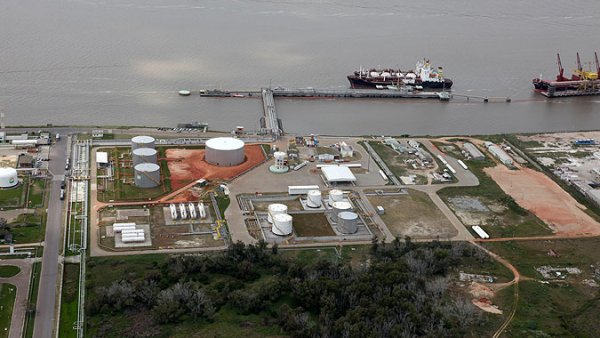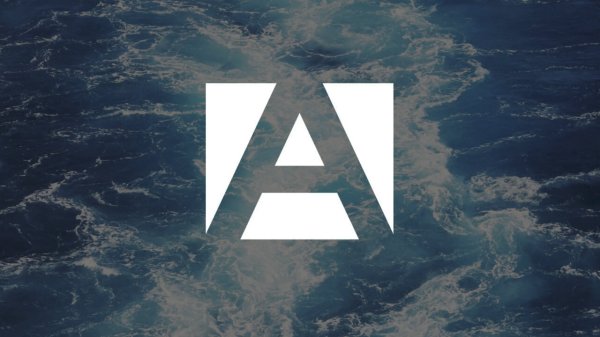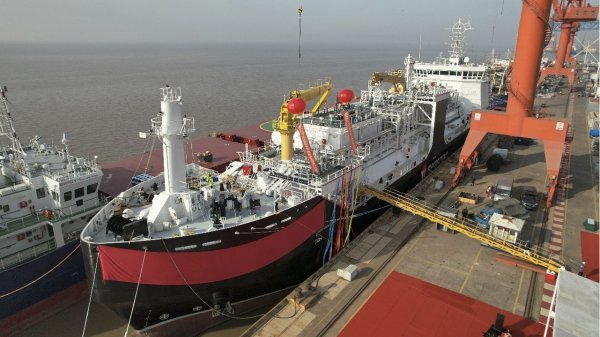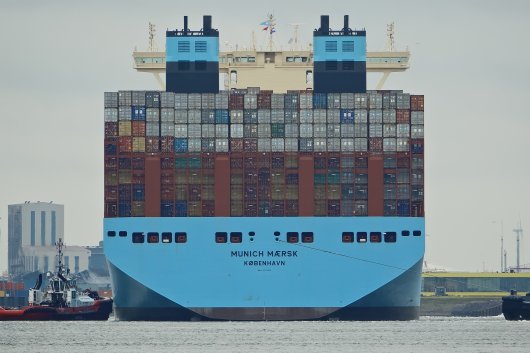Maersk targets 60% CO2 emissions reduction by 2020
Boxship giant has already surpassed IMO's 2030 carbon intensity target after last year achieving a 43% reduction (since 2007).
A.P. Moller - Maersk says that, by 2020, it aims to slash its CO2 emissions by 60 percent compared to a 2007 baseline.
The target was revealed by the boxship operator in an analysis of its performance in 2017, and is particularly relevant given last week's historic agreement at the International Maritime Organization's (IMO) 72nd Marine Environment Protection Committee (MEPC) meeting, which agreed to reduce shipping greenhouse gas (GHG) emissions by at least 50 percent on 2008 levels by 2050, with a strong emphasis on scaling up action to 100 percent by mid-century.
According to Maersk, by the end of 2017, it managed to achieve a reduction in CO2 emissions of 43 percent, which means that the shipping giant has already effectively surpassed the IMO's 40 percent carbon intensity target for 2030.
Decarbonisation
Looking ahead, Maersk says it aims to "contribute to the decarbonisation of logistics", which, it stresses, "will require measures beyond increased energy efficiency, e.g. innovation in alternative fuels".
"A.P. Moller - Maersk works to support sector-wide agreements that help ensure a level playing field, including increased regulation of greenhouse gas emissions from shipping through the International Maritime Organization. A.P. Moller - Maersk will also work to understand and act on climate change risks to the business," the Danish group stated.
Maersk, which operates the world's largest fleet of container ships and is the biggest bunker-buying shipowner, has developed a strategy to operate in compliance with the new sulphur threshold from 2020. It decided not to invest in the instalment of scrubbers on vessels (to enable the continued use of heavy fuel oil), and says it is in dialogue with refineries to secure a sufficient supply of compliant fuel by the time the global sulphur cap regulations come into force.
Enforcement
Maersk is keen to ensure that the upcoming 0.5% sulphur cap is properly enforced so that those companies that comply with regulations do not suffer economically as a result.
"Sub-par enforcement mechanisms may skew the playing field, leaving those complying with the new legislation at a disadvantage, as the price of compliant fuel is likely to exceed that of the heavy fuel oil currently in use.
"The lack of viable methods for enforcement will create an uneven playing field, punishing compliant shipowners financially. A.P. Moller - Maersk is exploring viable solutions to the enforcement challenges, both alone and as a board member of the Trident Alliance, an association of shipowners committed to the strong enforcement of the global cap.
"Current suggestions include making it illegal to buy fuel with a sulphur content higher than 0.5% for vessels without an approved technology for exhaust gas cleaning such as scrubbers," Maersk said.
The target was revealed by the boxship operator in an analysis of its performance in 2017, and is particularly relevant given last week's historic agreement at the International Maritime Organization's (IMO) 72nd Marine Environment Protection Committee (MEPC) meeting, which agreed to reduce shipping greenhouse gas (GHG) emissions by at least 50 percent on 2008 levels by 2050, with a strong emphasis on scaling up action to 100 percent by mid-century.
According to Maersk, by the end of 2017, it managed to achieve a reduction in CO2 emissions of 43 percent, which means that the shipping giant has already effectively surpassed the IMO's 40 percent carbon intensity target for 2030.
Decarbonisation
Looking ahead, Maersk says it aims to "contribute to the decarbonisation of logistics", which, it stresses, "will require measures beyond increased energy efficiency, e.g. innovation in alternative fuels".
"A.P. Moller - Maersk works to support sector-wide agreements that help ensure a level playing field, including increased regulation of greenhouse gas emissions from shipping through the International Maritime Organization. A.P. Moller - Maersk will also work to understand and act on climate change risks to the business," the Danish group stated.
Maersk, which operates the world's largest fleet of container ships and is the biggest bunker-buying shipowner, has developed a strategy to operate in compliance with the new sulphur threshold from 2020. It decided not to invest in the instalment of scrubbers on vessels (to enable the continued use of heavy fuel oil), and says it is in dialogue with refineries to secure a sufficient supply of compliant fuel by the time the global sulphur cap regulations come into force.
Enforcement
Maersk is keen to ensure that the upcoming 0.5% sulphur cap is properly enforced so that those companies that comply with regulations do not suffer economically as a result.
"Sub-par enforcement mechanisms may skew the playing field, leaving those complying with the new legislation at a disadvantage, as the price of compliant fuel is likely to exceed that of the heavy fuel oil currently in use.
"The lack of viable methods for enforcement will create an uneven playing field, punishing compliant shipowners financially. A.P. Moller - Maersk is exploring viable solutions to the enforcement challenges, both alone and as a board member of the Trident Alliance, an association of shipowners committed to the strong enforcement of the global cap.
"Current suggestions include making it illegal to buy fuel with a sulphur content higher than 0.5% for vessels without an approved technology for exhaust gas cleaning such as scrubbers," Maersk said.

|
IMO approves pricing mechanism based on GHG intensity thresholds
Charges to be levied on ships that do not meet yearly GHG fuel intensity reduction targets. |
|
|
|
||

|
VARO Energy expands renewable portfolio with Preem acquisition
All-cash transaction expected to complete in the latter half of 2025. |
|
|
|
||

|
NYK trials biofuel in milestone coal carrier test
Vessel is used to test biofuel for domestic utility company. |
|
|
|
||

|
H-Line Shipping orders LNG bunkering vessel
Vessel with 18,000-cbm capacity to run on both LNG and MDO. |
|
|
|
||

|
How to engineer and manage green shipping fuels | Stanley George, VPS
Effective management strategies and insights for evolving fuel use. |
|
|
|
||

|
Swedish government bans scrubber wastewater discharges
Discharges from open-loop scrubbers to be prohibited in Swedish waters from July 2025. |
|
|
|
||

|
MAN Energy Solutions achieves 100% load milestone for ammonia engine
Latest tests validate fuel injection system throughout the entire load curve. |
|
|
|
||

|
Petrobras secures ISCC EU RED certification for B24 biofuel blend at Rio Grande
Blend consisting of 24% FAME is said to have been rigorously tested to meet international standards. |
|
|
|
||

|
Stolt-Nielsen to fully control Avenir LNG with acquisition
Share purchase agreement to buy all shares from Golar LNG and Aequitas. |
|
|
|
||

|
Bureau Veritas supports launch of CIMC SOE's LNG bunkering vessel
Handover of Seaspan Energy's cutting-edge 7,600-cbm vessel completed. |
|
|
|
||
Related Links
- · Maersk Line recorded two incidents of sulphur non-compliance in 2017 [Insights]
- · Maersk Line spent $1.2bn more on bunkers in 2017; average price was highest since 2014 [Insights]
- · Maersk Line posts $336m profit swing despite spending $218m more on bunkers [Insights]
- · IMO agrees historic deal to cut carbon in shipping sector [Insights]

